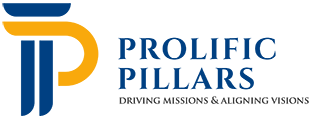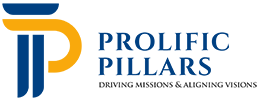Written By: Jeffrey Gyan
Are you looking to develop a competitive edge in order to stay ahead of the competition? Are you ready to supercharge your business? The answer should be simple: Yes! In order to do so, the solution is to optimize your processes. Join us as we explore the benefits of business optimization and share practical insights for achieving your goals.
In today’s fast-paced and ever-changing business landscape, organizations must constantly strive to optimize their operations to remain competitive and achieve success. Failing to optimize your organization can lead to higher costs, lower quality, reduced competitiveness, and employee dissatisfaction. To avoid these negative consequences, it is essential to prioritize optimization as a key part of your business strategy. Optimization involves streamlining processes, improving efficiency, and maximizing productivity to achieve the desired outcomes with fewer resources. Here are some tips and strategies to help you optimize your organization for success.
Define Your Goals and Objectives
To optimize your organization, you must have a clear understanding of what you want to achieve. Define your goals and objectives, and ensure that they are aligned with your overall mission and vision. Having a clear sense of purpose will help you to focus your efforts and prioritize your resources. An article published by Forbes earlier this year provided insight on strategies organizations can use to be productive in goal setting while ensuring their expectations are realistic. Forbes organizations should ensure goals pass the, “five checks” also known as the SMART method. Forbes 5 Goal-Setting Strategies you can use to stay focused recommend “ensuring goals are specific, granular, have space for honest conversations and development, have measurable activities to track progress and can retroactively be modified to align with future goals”.
Let’s take the example of a small manufacturing company seeking to improve operational efficiency and optimize activities across its production line. The company aims to streamline processes, reduce waste, and enhance productivity to remain competitive in the market. To achieve these goals, this organization decides to implement the SMART method.
Application of each SMART Knowledge Area:
Specific: First, the organization identifies a specific area for improvement—the assembly process for Product A. The objective is to reduce assembly time and increase throughput without compromising product quality.
Measurable: Next, the company establishes measurable targets, such as reducing assembly time by 20% and increasing daily production output by 15% within three months.
Attainable: After setting specific goals and metrics, the business analyzes the current assembly process, identifies bottlenecks, and determines potential improvements. They identify opportunities to optimize the layout, simplify workstations, and introduce automation where appropriate.
Relevant: Next, the focus shifts to ensuring the streamlining of the assembly process aligns with the company’s broader goals of improving efficiency and increasing competitiveness. It directly impacts the company’s bottom line by reducing production costs and improving customer satisfaction through faster delivery.
Timely: Finally, the organization sets a specific timeframe of three months to implement the improvements and achieve the desired outcomes. This timeframe allows for focused efforts and ensures timely results.
Outcome of utilizing the “SMART” Method:
By applying the SMART method, the organization successfully improves its assembly process for Product A. The implementation of optimized layouts, streamlined workstations, and automated processes results in the following outcomes:
Assembly Time Reduction: The company achieves a reduction in assembly time, allowing for quicker production cycles and improved efficiency.
Increased Production Output: The company experiences an increase in daily production output. This leads to higher product availability and faster delivery times for customers.
Cost Savings: The company’s streamlined process reduces production costs by eliminating unnecessary steps and minimizing waste. This positively impacts the company’s profitability.
Enhanced Customer Satisfaction: By delivering products faster and more efficiently, this improves customer satisfaction and strengthens its reputation in the market.
Overall, the utilization of the SMART method enables this organization to achieve specific, measurable, attainable, relevant, and timely improvements in its assembly process. The optimization leads to increased efficiency, higher production output, cost savings, and improved customer satisfaction, positioning the organization for continued success in the competitive manufacturing industry. This highlights the importance of defining clear goals and objectives that are aligned with the organization’s overall mission and vision, and using strategies like the SMART method to ensure they are realistic and achievable.

Evaluate Your Current Processes
Assess your current processes to identify areas for improvement. Look for bottlenecks, redundancies, and inefficiencies that are hindering your productivity. Determine which processes are critical to your success and which can be streamlined or eliminated.
Implement Process Improvement Initiatives
Once you have identified areas for improvement, implement changes to streamline your processes and improve efficiency. Use the PDCA Cycle (Plan, Do, Check, Act) to test and refine your solutions. Encourage employee feedback and involvement in the process improvement initiatives.

Leverage Technology
Technology can be a powerful tool for optimizing your organization. Entrepreneur.com media outlet states “Traditional tactics no longer drive business; it’s all about fostering innovation, encouraging risk-taking and embracing new technologies.” It’s not just a nice-to-have for your business. It’s crucial to achieve your long-term goals, satisfy customers and spearhead scalable growth.
For instance, a healthcare provider can leverage technology to improve patient care and reduce costs. By implementing an electronic health record system, the provider can automate manual processes, improve data analysis, and enhance collaboration among healthcare professionals. This technology can help the provider to identify potential health risks, improve treatment outcomes, and reduce administrative costs.
By investing in technology that can automate manual processes, improve data analysis, and enhance collaboration, organizations can improve performance and gain a competitive edge.

Develop Your People
Your employees are your greatest asset. Invest in their development to enhance their skills, knowledge, and capabilities. For example, a company can optimize its performance by investing in the development of its employees. The company can offer training programs and workshops to enhance their technical skills, knowledge, and capabilities. By continuously developing their people, the company not only improves individual performance but also fosters a culture of innovation and continuous improvement. By offering training and development opportunities, organizations can enhance employee performance, increase job satisfaction, and drive overall organizational success.

Measure and Monitor Performance
To ensure that you are making progress towards your goals, establish metrics to measure your performance. Monitor your progress regularly and make adjustments as needed. To illustrate, a marketing agency can optimize its performance by measuring and monitoring key performance indicators (KPIs). The agency can establish metrics such as conversion rates, customer acquisition costs, and return on investment (ROI) to track the effectiveness of marketing campaigns. By regularly monitoring these metrics and analyzing data trends, the agency can identify areas for improvement, make data-driven decisions, and optimize marketing strategies to achieve better results. By establishing relevant metrics, regularly tracking progress, and utilizing data analytics, organizations can identify strengths, weaknesses, and opportunities for improvement, allowing them to make informed decisions and optimize their overall performance.

Foster a Culture of Continuous Improvement
Optimization is an ongoing process. Foster a culture of continuous improvement by encouraging employees to identify areas for improvement and providing them with the resources and support they need to make changes. An article published by McKinsey & Company, suggests even creating an Organization Effectiveness Office (OEO) to regularly assess pain points and misalignments to for continuous rapid solutions to be implemented. While improvements are made over time, be sure to celebrate successes and recognize the contributions of those who have helped to optimize your organization.

Optimizing your organization is a challenging but essential task for achieving success in today’s business world. By defining your goals, evaluating your processes, leveraging technology, developing your people, measuring performance, and fostering a culture of continuous improvement, you can achieve the outcomes you desire with fewer resources and less effort.
Are you looking to unleash the true potential of your organization and business venture?
Follow Prolific Pillars on LinkedIn & Instagram for expert insights, practical tips, and valuable resources to help you optimize your organization, strengthen your team, and achieve your professional development goals. Keep in touch with our community and stay up-to-date with the latest trends and best practices in business optimization and leadership development! Contact us today and figure out how we can help you drive your mission and align your vision!
More information for cited information can be found here:
• McKinsey & Company’s Organizational effectiveness for sustained performance and health
• Entrepreneur.com – 6 Ways to Leverage Technology to Rock Your Digital Relevance
• Forbes 5 Goal-Setting Strategies
• KPIs
• ROI
Author Byline:
Author Jeffrey Gyan is an experienced consulting professional with a passion for project management, operational excellence, and philanthropy. With a master’s degree in Public Administration, specializing in Budgeting and Financial Management, and holding certifications as a Project Management Professional (PMP) and Certified Scrum Product Owner (CSPO), Jeffrey brings a wealth of knowledge and expertise to the table.
With over 8 years of formal project management experience, Jeffrey has successfully led and managed innovative initiatives in large-scale operational settings, contributing to company advancement as leaders in the industry. As a dedicated philanthropist, Jeffrey devotes their time and resources to ensuring that those less fortunate receive the help they need through facilitating community events and initiatives.
Jeffrey is the Founder and CEO of Prolific Pillars, a consulting, grant writing, and project management agency. Through Prolific Pillars, Jeffrey works with for-profit businesses, non-profit organizations, and government agencies worldwide, helping them operate in a more efficient and effective manner. As an entrepreneur, Jeffrey is committed to making a positive impact and driving change for the better.
With a unique blend of expertise in project management, operational leadership, and a dedication to philanthropy, Jeffrey brings a fresh perspective and valuable insights to their writing and consulting endeavors.



Leave A Comment